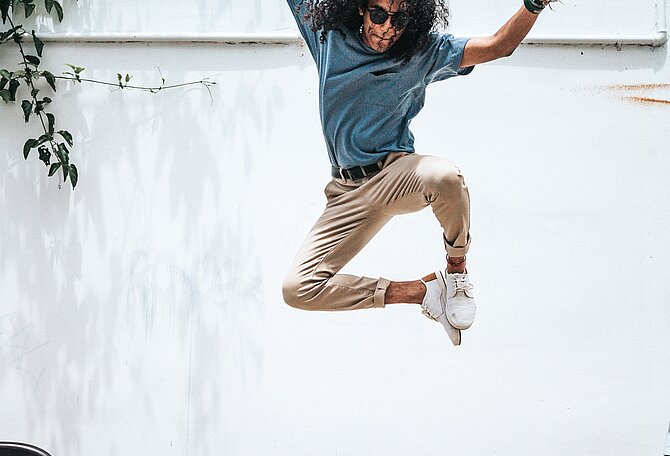Find out today what the legal world will be talking about tomorrow.
Following several client questions in the recent past, we would like to address a problem that suffers from an apparent lack of awareness, but may result in considerable expenses. The problem concerns the use of street art in souvenir shops without the indication of sources.
It is not only in the classic art world that street art attracts interest. As we have seen in our advisory practice, these works are increasingly being incorporated in all types of the souvenir business; for example, where photographs of these works are printed on coffee mugs, t-shirts, postcards, and other souvenir items.
At least in Germany, such use of street art works is frequently possible without requiring consent based on the panorama freedom governed by Section 59 Copyright Act (see http://www.zfir-online.de/heft-15-2014/zfir-2014-551-stealing-banksy-immobilienrechtliche-herausforderungen-durch-street-art/). According to Section 59 Copyright Act, it is permissible to reproduce, distribute or make available to the public works located permanently on public roads and ways or public open spaces.
As we have also found in our advisory practice, one point is often overlooked, however. Use under Section 59 Copyright Act provides for a binding obligation to acknowledge the source in accordance with Section 63(1) Copyright Act. Indication of source is more than merely mentioning the artist’s name. In addition to the artist, the name of the work and, where applicable, even its place of origin must be applied to the souvenir item.
Only in very exceptional cases is it possible to waive indication of the source in whole or in part. It is frequently overlooked that, unlike under general licensing rules of copyright works, the standard of customary practice is not relevant as far as the obligation to acknowledge the source under Section 63(1) Copyright Act is concerned. Opposing common usage, according to which authors are not mentioned on souvenirs, does not apply in the context of Section 59 Copyright Act, as recently found, for example, by Hamburg Higher Regional Court. Rather, it is only possible to waive source indication where the source is unknown to the user; be it that it is not indicated on the street art works themselves or that it cannot be learned otherwise; the investigation duties must be appropriate, and a documentation of unsuccessful investigation will be required, however.
Especially in cases such as Banksy or works of outdoor galleries such as the East Side Gallery in Berlin, where artists are at least known with their professional names, sources must be indicated.
Whoever fails to indicate the source may be subject to claims for injunction. While this does not mean that the full range of souvenir items must be destroyed, at least subsequent addition of the source needs to be arranged. Where this is not possible, however, the stock of souvenir items must be destroyed. Additional cost may also be incurred, whether in the form of damages or the refunding of warning fees. Monetary compensation is less likely, however, since this is granted only in exceptional cases of failure to indicate the source.
Conclusion:
Anyone who produces souvenir items, should include an indication of the source or at least provide documentary proof why acknowledgment of the source has not been possible.
At least in Germany, such use of street art works is frequently possible without requiring consent based on the panorama freedom governed by Section 59 Copyright Act (see http://www.zfir-online.de/heft-15-2014/zfir-2014-551-stealing-banksy-immobilienrechtliche-herausforderungen-durch-street-art/). According to Section 59 Copyright Act, it is permissible to reproduce, distribute or make available to the public works located permanently on public roads and ways or public open spaces.
As we have also found in our advisory practice, one point is often overlooked, however. Use under Section 59 Copyright Act provides for a binding obligation to acknowledge the source in accordance with Section 63(1) Copyright Act. Indication of source is more than merely mentioning the artist’s name. In addition to the artist, the name of the work and, where applicable, even its place of origin must be applied to the souvenir item.
Only in very exceptional cases is it possible to waive indication of the source in whole or in part. It is frequently overlooked that, unlike under general licensing rules of copyright works, the standard of customary practice is not relevant as far as the obligation to acknowledge the source under Section 63(1) Copyright Act is concerned. Opposing common usage, according to which authors are not mentioned on souvenirs, does not apply in the context of Section 59 Copyright Act, as recently found, for example, by Hamburg Higher Regional Court. Rather, it is only possible to waive source indication where the source is unknown to the user; be it that it is not indicated on the street art works themselves or that it cannot be learned otherwise; the investigation duties must be appropriate, and a documentation of unsuccessful investigation will be required, however.
Especially in cases such as Banksy or works of outdoor galleries such as the East Side Gallery in Berlin, where artists are at least known with their professional names, sources must be indicated.
Whoever fails to indicate the source may be subject to claims for injunction. While this does not mean that the full range of souvenir items must be destroyed, at least subsequent addition of the source needs to be arranged. Where this is not possible, however, the stock of souvenir items must be destroyed. Additional cost may also be incurred, whether in the form of damages or the refunding of warning fees. Monetary compensation is less likely, however, since this is granted only in exceptional cases of failure to indicate the source.
Conclusion:
Anyone who produces souvenir items, should include an indication of the source or at least provide documentary proof why acknowledgment of the source has not been possible.


![[Translate to English:] [Translate to English:]](https://www.skwschwarz.de/fileadmin/_processed_/a/5/csm_ELLG_Maerz_2024_35e402a595.png)